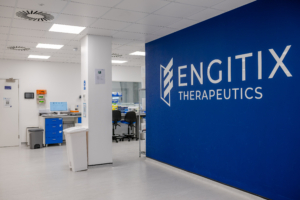
New Laser Fluorescence Technique can deliver unique information in drug discovery
The optically pumped semiconductor laser (OPSL) is an ideal light source for structured illumination microscopy (SIM), a laser fluorescence technique that can deliver unique information in drug discovery.
Fluorescence microscopy using probes and transgenic fluorescent proteins is a fundamental tool used throughout life sciences, not just in drug discovery. To better understand the connection between molecular-level events and macroscopic structure and dynamics, researchers are now increasingly using a growing number of so-called superresolution microscopy methods that surpass the classical diffraction limit on spatial resolution. Coherent supports these methods with our Genesis series of multi-watt lasers. Unfortunately, superresolution imaging is often too slow to follow processes like binding, signaling, and other events in real-time. Plus, the high laser power required can be a problem with photodamage in live tissue.
Structured Illumination Microscopy (SIM) is an enhanced resolution method that provides much higher speed over a wide field view, while still beating the diffraction limit. Specifically, SIM delivers a typical lateral (xy) resolution of 100-120 nm. It can be deployed in a 3D format with very effective out-of-focus noise suppression, resulting in an axial resolution <500 nm which makes it a useful tool for optical sectioning. In drug discovery, this resolution can provide key information about how sub-cellular components react under the influence of drug candidates for example, as well as revealing how the chemical is entering the cell core.
SIM is an interference technique that relies on the coherent wave properties of laser light. In the SIM microscope, an optic called a diffraction grating creates a pattern of light at the sample. In the original SIM format, a simple pattern of linear stripes was used. The camera captures a raw image that is a convolution of the illumination pattern and the sub-micron spatial details of the sample. The stripe position and orientation are changed several times, and the emitted fluorescence pattern is recorded for each of those positions. The microscope then uses an algorithm to reconstruct a complete image from these multiple raw images. A newer variant called Lattice SIM uses a three-dimensional matrix of dots rather than stripes and has the advantage of needing a smaller number of partial images. This results in higher speed and lower photon dosing, which are both important benefits for following dynamic processes in live cells.
The SIM technique creates a set of requirements for the laser light source itself. In terms of power, this depends on the required imaging speed and sample photosensitivity. But typically, the optimum laser is around 200-300 milliwatts. Beam quality is important with TEM00 being the preferred mode, corresponding to a perfectly circular beam with a gaussian intensity cross-section. This maximizes the resolution of the final images and ensures the most efficient use of the available laser power. Low laser output noise is desirable in any imaging application, but is particularly useful for SIM which creates final images from multiple sequentially acquired partial images. And most important of all, the laser wavelength must be matched to the excitation characteristics of the fluorescent probes and proteins being used.
A technology called the optically pumped semiconductor laser (OPSL) meets every one these requirements in part because of its unique power scaling and wavelength scaling attributes. The Coherent Sapphire family of OPSLs is available at multiple wavelengths in the blue, green, and yellow portions of the visible spectrum with a choice of power levels up to 500 mW, enabling their use with many common probes. Or for SIM applications that can use lower power levels, Coherent OBIS lasers provide a particularly cost-effective option with multiple wavelength choices across the visible, power in the tens of milliwatts, and the usual OPSL attributes of low-noise and excellent beam quality.
Wed like to thank Matthias Schulze and Petra Wallenta for this interesting contribution.
Matthias Schulze, Coherent Inc., matthias.schulze@coherent.com | www.coherent.com


 Photo from Giulia Bertelli on Unsplash
Photo from Giulia Bertelli on Unsplash  Engitix
Engitix Evotec SE
Evotec SE